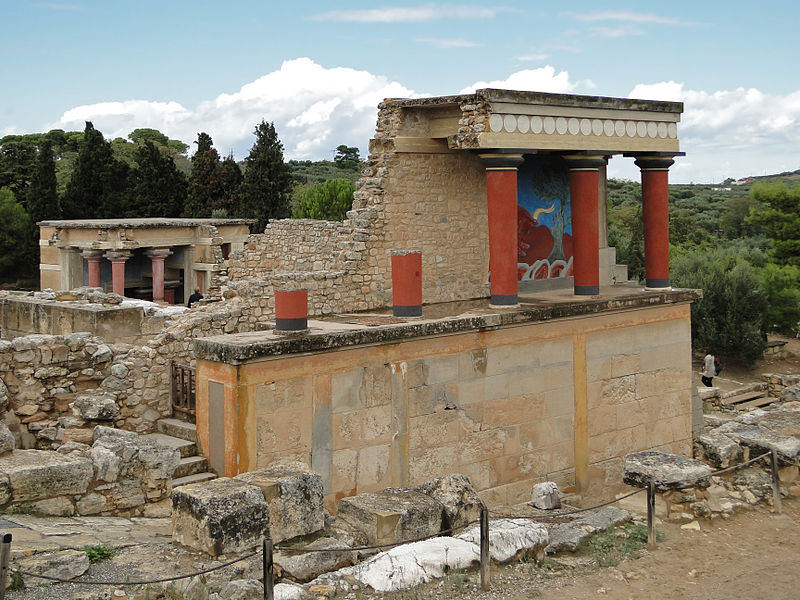Although this city was discovered a while back, researchers have found out some amazing new things about it. Researchers from the Knossos Urban Landscape Project have made the discovery that during the Iron Age the city of Knossos was three times larger than what they originally had believed.
Just recently, the researchers were doing fieldwork when they uncovered artifacts that dated to the Iron Age. What made this discovery different is that the artifacts were in an unexplored area of Knossos. Knossos is located on the Greek island of Crete. Although the new information may not seem impressive, it really is. Knossos was a larger city than anyone ever thought, and it was involved in more international trade than any historian or researcher could have imagined.

The city was once home to many magnificently beautiful palaces, famous philosophers like Epimenides and Aenesidemus, and even a Minotaur. The Minotaur was never seen, but it was talked about in ancient Greek mythology, where it’s stated that the Minotaur lived in Knossos. The many artifacts found by archaeologists over the years proves that Knossos is an extremely rich site.
The latest discoveries made by the researchers imply that during the Iron Age the city was an important and popular hub. Although the city suffered from a socio-political collapse in 1200 BCE, it was believed to have made a comeback and developed into a densely populated, wealthy city. The people made a living by importing goods in large quantities; they traded from the Greek mainland, Italy, Egypt, Near East, and the western Mediterranean. Many cities in Greece would only trade with each other, so Knossos’ trading system must have been especially elaborate and successful.
One of the researchers on the project, Antonis Kotsonas, said that just by looking at how large the site is and how many artifacts they’ve found, they can tell it was a densely populated city. He also said that there isn’t any other site in the Aegean period that has ever had such a large range of imports.
Here is a little history about the city:
To put it into perspective of today’s Greece, the city would have been about 20 minutes from the port town Iraklio. Knossos was actually inhabited for several thousands of years, the first settlement being in the Neolithic Period in the 7th millennium BC. It was then abandoned after its destruction in 1375 BC, which had marked the end of Minoan civilization.
Around 900 BC. the first palace was built in the city right next to Krairatos River beside a hill. The palace was destroyed along with other palaces around Crete around 1700 BC., either from an earthquake or from invaders. The palaces were immediately rebuilt into an even more elaborate complex until abandoned and damaged by several earthquakes. It also did not help that there were several invasions. In 1450 BC there was a large volcanic eruption of Thera, and finally there was the invasion of the Mycenaeans, who had used Knossos’ capital as their own to rule the island until 1375 BC.
In the 1900s, a British archaeologist named Arthur Evans had actually restored large parts of the palace. The partial restoration was so successful that people today can still appreciate what the palace would have looked like in all of its grandeur.
According to Greek mythology, the palace was designed by a famous architect Dedalos. He had made the palace so grand and complex that no one could ever find the exit. King Minos had commissioned the palace, and kept the architect a prisoner so that Dedalos would not reveal the plan to anyone. The labyrinth in the palace apparently had a Minotaur living there and mythology has it that Theseus killed the Minotaur.
According to Greek mythology Dedalos was quite the successful inventor in another way. He built two sets of wings so he and his son, Ikaros, could fly off the island. On the way off the island, Dedalos warned the son not to fly too close to the sun because the wax on the wings would melt. Unfortunately, Ikaros was too impulsive and flew too close to the sun, falling to his death in the Aegean Sea.
Sources: http://mentalfloss.com/article/73376/ancient-city-knossos-was-three-times-bigger-we-thought
http://ancient-greece.org/archaeology/knossos.html